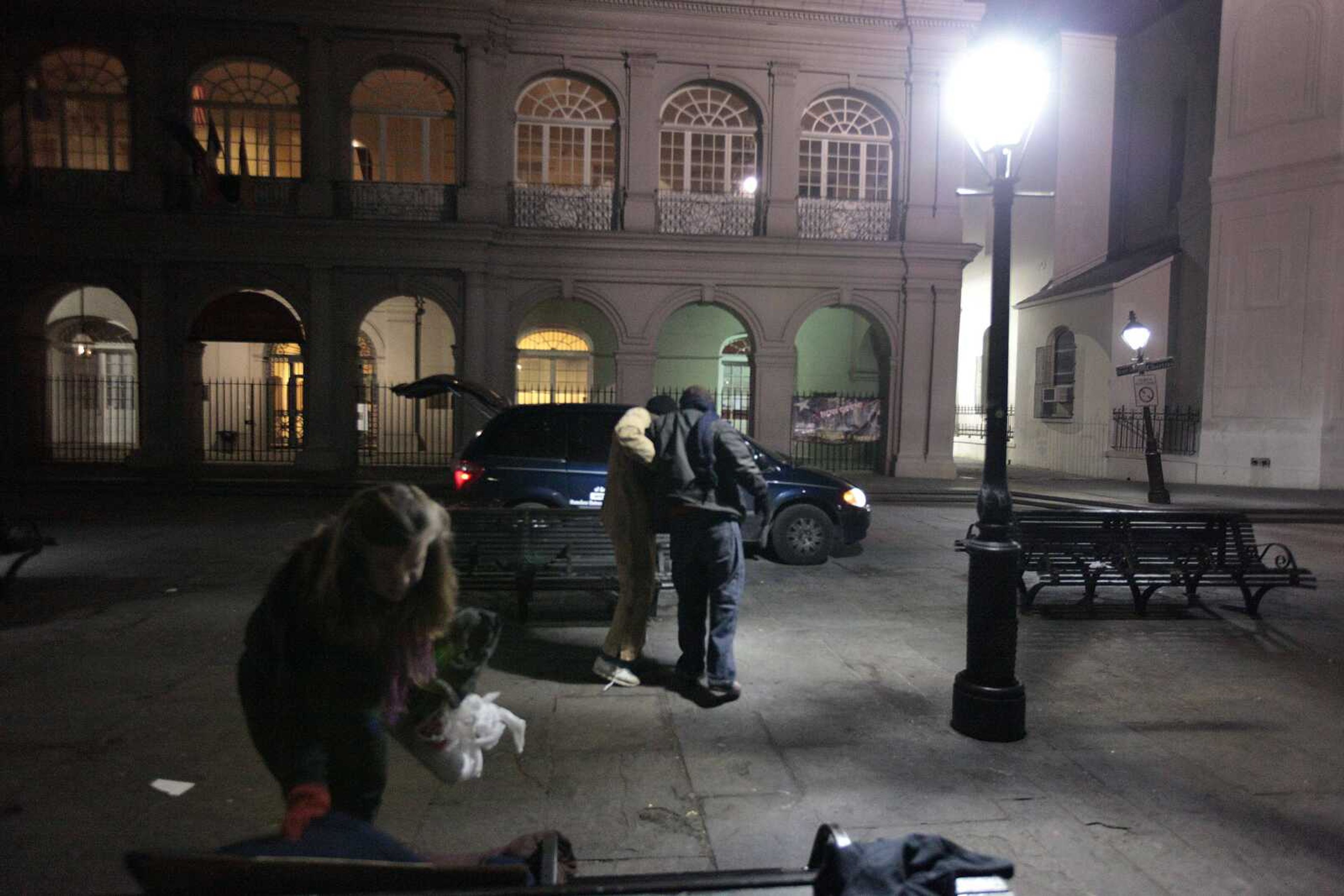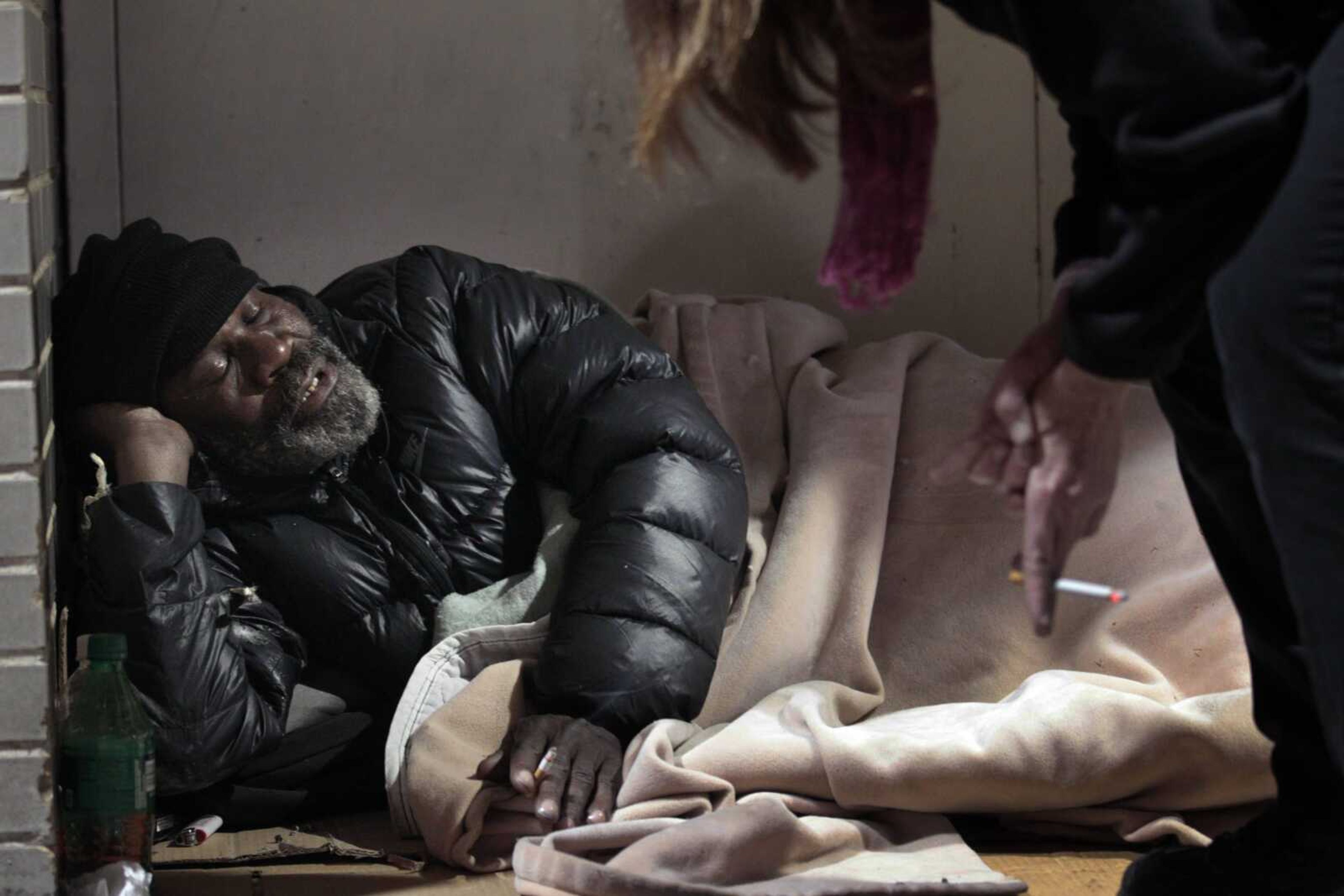Drifters find home in ruins left by Hurricane Katrina
NEW ORLEANS -- The dark blue rescue van pulls up in front of a sad shell of a house, a few blocks from the police station and criminal court. It's turning into a cold January night. Slipping on gloves, social workers Mike Miller and Katy Quigley head in...
NEW ORLEANS -- The dark blue rescue van pulls up in front of a sad shell of a house, a few blocks from the police station and criminal court. It's turning into a cold January night.
Slipping on gloves, social workers Mike Miller and Katy Quigley head in.
"Homeless outreach! Anybody home?" Miller shouts as he climbs over a balcony and up a flight of stairs.
No one's home. But there are signs of life: a slept-on mattress, bits of food, smells of urine and feces.
The upstairs apartment hasn't been touched since Hurricane Katrina. There's paperwork, letters, clothing, medicine bottles, a child's stuffed animal, a Star Wars X-Wing fighter plane on the carpeted stairs.

A business card they left on the fetid mattress during their last trip is gone. That's a good sign.
They move on.
At an abandoned 100-year-old factory, they find a few squatters. The factory has become a spot for day laborers working for temp services, restaurants, construction crews. The wages and tips, plus side tricks like collecting aluminum cans, aren't enough to get them into an apartment since rents skyrocketed after the storm.
Quigley pauses outside a room overlooking the factory floor. "On New Year's Day a guy was hit by a cab and killed on Claiborne and Gravier on his way to his temp job," she says. "He lived right here."
More than five years after Katrina, New Orleans is struggling to deal with about 43,000 blighted residential properties -- in various states of neglect and collapse. The city has a larger percentage of blighted properties than any other U.S. city, about a quarter of its housing stock.
And in these wastelands, an estimated 3,000 homeless find refuge every night. They are people suffering from mental illness, disability or substance abuse, or simply down-on-their-luck working poor. They can be found sleeping in schools, rundown shotgun-style houses, warehouses, sprawling factories, and even funeral homes and hospitals.
Any vacant place works.
Unity of Greater New Orleans, a collaboration of 63 homeless agencies, has been running sweeps across the city every week for more than two years looking for "the sickest of sick puppies," as Miller puts it.
"Worked someone out of there, someone out of there," Miller said, pointing as he drives through Mid-City. "It is every neighborhood in New Orleans: People living in abandoned buildings. There's not one neighborhood where we haven't pulled someone out."
Miller, a 31-year-old part-time bartender and transplant from Illinois, and Quigley, a 52-year-old mother who's worked much of her life with the poor and homeless with HIV and AIDS, sit in the front van, smoking cigarettes. They scan the streets for homeless and swap stories about people sleeping under piers on the Mississippi River or in the shadow of the cathedral in Jackson Square. One guy fell off a 10-foot scaffolding. Another refuses offers for housing after 20 years on the streets. There was a man they found in a house who had been drinking antifreeze for four days in an attempt to kill himself.
"Now's he's with Volunteers of America. It's kind of cool. An older guy," Miller said.
"But we haven't found anyone dead ... which is good."
Laboratory city
In the wake of Katrina, New Orleans became a laboratory for many things -- urban planning, eco-friendly building, school reforms, community-driven politics, volunteerism, adaptation to a world facing global climate change.
But social workers and homeless advocates say an opportunity was missed to make New Orleans a laboratory for ending homelessness in an American city. Overnight, a majority were left homeless by Katrina, which struck on Aug. 29, 2005.
With about 11,000 homeless, New Orleans has the nation's highest number per capita, according to Unity.
It took Congress until the summer of 2008 to give the New Orleans metro area enough money -- funneled through a Department of Housing and Urban Development voucher program -- to house 875 of the most vulnerable people living on the streets.
By then, tent cities had sprung up in front of city hall and along Canal Boulevard, the city's main thoroughfare.
"There was a lot of hope at the beginning [after Katrina] that since everyone had left the city, that we could prevent the recurrence of homelessness at all as people came back," said Nan Roman, the head of the National Alliance to End Homelessness.
Not enough was done, she said -- "not what we had hoped, something like a game changer. That didn't happen."
Meanwhile, rebuilding programs for renters have languished, as has the construction of cheaper housing. In addition, mental health and health care services remain crippled.
"The magnitude of the problem calls for a muscular response, but that hasn't really happened," said Martha J. Kegel, the executive director of Unity.
"It's a shame that we're still having to do search and rescue for homeless in abandoned buildings five and a half years after the hurricane."
Connect with the Southeast Missourian Newsroom:
For corrections to this story or other insights for the editor, click here. To submit a letter to the editor, click here. To learn about the Southeast Missourian’s AI Policy, click here.








